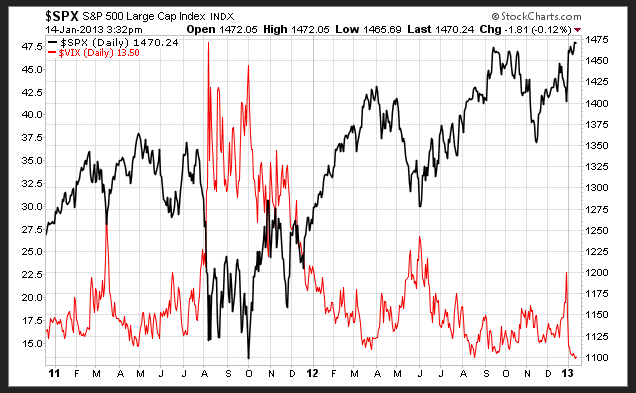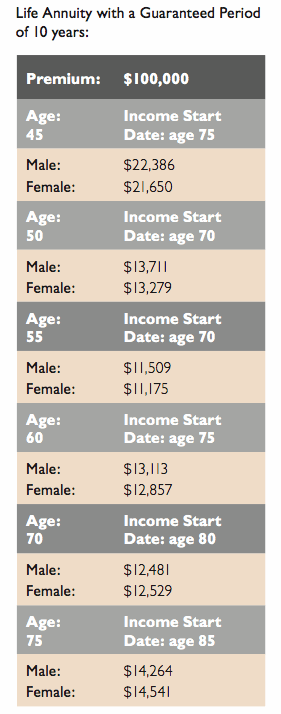
A funny thing happened in the U.S. equity markets late last May. Jitters about a possible Greek exit from the Eurozone spooked investors. Stocks plunged. S&P volatility spiked. And on the dashboards of certain “managed volatility” funds, red lights flashed.
Among those risk-managed funds were the three TOPS Protected ETF Portfolios that Ohio National, Nationwide and Minnesota Life use to buffer the market risk inherent in the relatively generous lifetime income guarantees of their variable annuities. Without the risk-controls in those funds, in fact, those benefits probably wouldn’t be sustainable in today’s stingy rate environment.
Managed by Valmark Advisors and sub-advised by Milliman, the TOPS Protected ETF Portfolios employ a dynamic short-futures strategy designed to deliver 60% to 70% of the market’s upside during peaceful bull markets while making “drawdowns” shallower.
But the strategy is vulnerable to the kind of head-fake that the equity market put on it last spring, one that can be seen in the red and black chart below (courtesy of Doug Short of Advisor Perspectives). The chart overlays the history of the S&P500 and the VIX volatility index during the past two years, and illustrates the conditions that the portfolios had to weather.
The third-quarter 2011 market correction can be see at left, where the red VIX lines rise above the black S&P500 lines. Farther to the right, in May and June 2012, there were similar hints of an impending correction, but it was a false alarm. Volatility lapsed and the S&P500 recovered. Stiill, the signs temporarily fooled the TOPS Protected strategy, slowing the portfolios’ performance last year.

“Volatility did spike in the early summer of last year,” Doug Short told RIJ. “So I’m not surprised that some funds got whipsawed in 2012 in their read of the VIX and similar volatility indicators. They were expecting a selloff similar to the year before.”
By the end of 2012, all three TOPS Protected ETF Portfoliios (Balanced, Moderate Growth and Growth) had topped their benchmarks (the S&P Daily Risk Controlled 8%, 10% and 12% Indices, respectively) with returns of 8.39%, 8.66% and 8.24%, but not before the industry began to buzz with gossip that these relatively new-to-annuities TOPS portfolios had been a disappointment in a year when the S&P 500 returned 16%.
“We heard the buzz last year, and we fought it as much as we could,” said Michael McClary of Valmark, an Akron, Ohio-based securities firm that is better known in the ETF world than the mutual fund world. “But it took on a life of its own.”
Gauging the performance and appeal of managed volatility funds is both important and difficult. It’s important because VA issuers can ill afford to offer GLWB riders with generous roll-ups to retiring Boomers unless the contract owners bear some of the market risk—by agreeing to put all or part of their premia in low-volatility investment options.
Yet it’s difficult to compare the various competing managed volatility funds, because they come in so many different flavors. They hold different types of assets, use different risk-management methods, have different objectives and cost structures, and track different benchmarks. And they are so new to the variable annuity space that it may be too soon to evaluate them meaningfully. Morningstar, for instance, doesn’t have a managed volatility fund category yet.
Short futures strategy
The TOPS Protected ETF Portfolios themselves are only about 18 months old. They benefit from a strategy created by Milliman over a decade ago for institutional portfolios. The strategy involves using part of the fund’s own assets to enter short equity-ETF futures contracts. The futures appreciate in value when equity prices fall, and their value offsets the paper losses of the fund’s equity holdings.
“We can still be at an 85/15 allocation, but the short futures could give us an effective allocation of 65/35,” McClary told RIJ. The manager doesn’t have to sell equities and, because losses haven’t been locked in, the technique makes the fund less likely to miss out on the next market rebound.
“The mandate of these portfolios is to manage to a risk level directly by dynamically shifting the hedge position for changes in volatility and increased downside exposure,” said Adam Schenck of Milliman. “We expect the portfolios to capture a significant portion of the upside of protracted bull markets, which play out over many years. What we saw over 2012 was an unusual bull market scenario.”
“We will trail during high volatility bull markets. May 2012 was a down month, but we were still well ahead of the benchmarks heading into June 2012,” McClary said. As volatility spiked, “we de-allocated during that period. Then the market shot right up. It was a short-term high volatility bull market. There’s nothing we can do in that situation.
“That type of situation doesn’t carry on for a long time, and [the slightly lower returns] is not something that will change your standard of living. But that’s not the risk we’re protecting against. We protect against high-volatility bear markets and long-term bear markets. We finished with an 8.2% gain and a beta of 0.24 on our balanced model.”
At the end of 2012, TOPS Protected Moderate Growth held about 30% fixed income, 60% equities and 10% cash. The Growth portfolio had a 76.5% equity allocation at the end of 2012. The Balanced portfolio had a 40% equity allocation. The portfolios also enter into short futures contracts tied to the “Mini” versions of the MSCI EAFE Index, the S&P500 Index, the Russell 2000 Index, the S&P Midcap 400 Index and the MSCI Emerging Markets Index.
In the bond portion, TOPS’ biggest exposures were to TIPS, high quality corporate bonds and high-yield bonds through iShares ETFs. In the equity portion, the holdings were a smorgasbord of largely Vanguard, iShares and SPDR ETFs in a wide range of regions, sectors, and styles.
Apples and oranges
Certain other “managed volatility” funds outperformed the TOPS Protected Portfolios last year, but they had different holdings. For instance, the BlackRock Managed Volatility Fund, classified by Morningstar as a Moderate Allocation Fund, held about 50% equities, 38% bonds and 12% cash as of October 31, 2012. It returned 12.27% in 2012, according to vanguard.com, or about 2% behind the Morningstar Moderate Allocation.
It had a turnover rate of 324% over the past three years and a beta of .80 (vs the Morningstar Moderately Aggressive Target Risk), compared to the TOPS Protected Moderate Growth’s beta of 0.28 and turnover of 7%, according to Morningstar. SEI’s Managed Volatility Fund, classified as a Mid-Cap Blend fund, also returned just over 12%. But that’s an equity fund. PIMCO’s Global Multi-Asset Managed Volatility Portfolio, launched last September, is too new to evaluate.
Two charts from Morningstar.com show the behavior of the TOPS Protected Funds over the past 18 months. In the chart directly below, which shows the change in the value of a hypothetical $10,000 in the TOPS Protected Growth portfolio from June 9, 2011 to December 25, 2012, it’s evident that the TOPS portfolio fell much less than the Morningstar Aggressive Allocation benchmark in the 3Q 2011 downturn. It’s also evident that the TOPS portfolio performance nearly matched that benchmark in mid-2012, but lagged that benchmark in the following rebound.

A second chart (below), compares the progress of a hypothetical $10,000 in TOPS Protected Moderate Growth with that of the BlackRock Managed Volatility Fund (Institutional). Their performance diverges in mid-2012, with the TOPS portfolio falling behind during the second half of the year before closing the gap at the end of 2012.

One satisfied insurer
Annuity executives at Ohio National, the Cincinnati-based mutual company that was the first to offer TOPS Protected portfolios as a variable annuity investment option, said they are satisfied with the results that the funds produced in 2012. The company’s VA sales in 2012 totaled $2.8 billion. Overall, the insurer manages $30.6 billion.
Not knowing if customers and advisors would embrace the trade-offs of the relatively untested managed-volatility investment requirement, Ohio National originally offered two GLWB options last January; the richer option one required putting at least half of the premium in managed volatility investments.
“We got acceptance faster than we expected. The wholesalers got some feedback at first. People were a little nervous. They were asking, ‘Is it working as advertised?’ But now the story is accepted,” said Jeff Mackey, FSA, assistant vice president, Annuity Product Management at Ohio National. The story has been accepted well enough that Ohio National was able to eliminate the less-rich living benefit rider entirely.
Steve Murphy, FSA, Ohio National’s senior vice president, Capital Management, told RIJ, “We thought we would need the other rider for 2012 and 2013, but we’ve closed that one, which indicates that the marketplace likes the story. People buy the product for protection.
“And even though they know their benefit base is protected [by the GLWB], they still feel bad if their account value goes down. This strategy [which buffers falls in account value] provides both belt and suspenders. This story has definitely sold well in the marketplace. We had trouble keeping a lid on sales. We de-risked five times last year and still had no problem with sales,” he added.
Mackey told RIJ, “We think these are a good fit for account holders, for advisors who want a stable trail income, and for us on our balance sheet. They give us more stable earnings. It really has performed as expected and we’re pleased.
“You have to be careful about looking at narrow performance windows,” he added. “These are long-term investments. The time horizons are 30-plus years out, so to look at their performance over a week or a month is a bit shortsighted.
“Also, you have to remember that these portfolios are designed to mitigate severe downturns. There’s no free lunch here. There will be periods where it could underperform. But if you want the extra protection, you might have to give up something on the upside.”
High stakes
The stakes here are measured in billions of dollars, as fund companies compete to offer managed volatility investments to life insurers, as life insurers compete to offer appealing retirement income products to Boomers (despite market, interest rate, and longevity risk constraints), and as retiring Boomers struggle to squeeze more income—and peace-of-mind—out of their savings.
One indication of the level of competition among asset managers: Last November, a person who did not fully identify himself e-mailed RIJ a highly critical two-page review, dated October 1, 2012, of Milliman’s TOPS Protection method apparently written by a firm called “Retirement Products Research.” RIJ was unable to trace the origin of the document, and the original sender did not respond to requests for attribution.
© 2012 RIJ Publishing LLC. All rights reserved.


 “So we’re creating multiple products. Income products used to be one-size-fits-all. It either fit your needs or it didn’t. It wasn’t a solution; it was a product. Now we have multiple solutions, and an advisor can see what works best for each client,” he added.
“So we’re creating multiple products. Income products used to be one-size-fits-all. It either fit your needs or it didn’t. It wasn’t a solution; it was a product. Now we have multiple solutions, and an advisor can see what works best for each client,” he added.
 Keon called 2012 “relatively calm” in terms of volatility and pointed to the S&P 500’s 16% return as evidence. “It’s been a pretty good year despite all the uncertainty,” he said. “A lot of the bad stuff that we feared didn’t happen.”
Keon called 2012 “relatively calm” in terms of volatility and pointed to the S&P 500’s 16% return as evidence. “It’s been a pretty good year despite all the uncertainty,” he said. “A lot of the bad stuff that we feared didn’t happen.”



